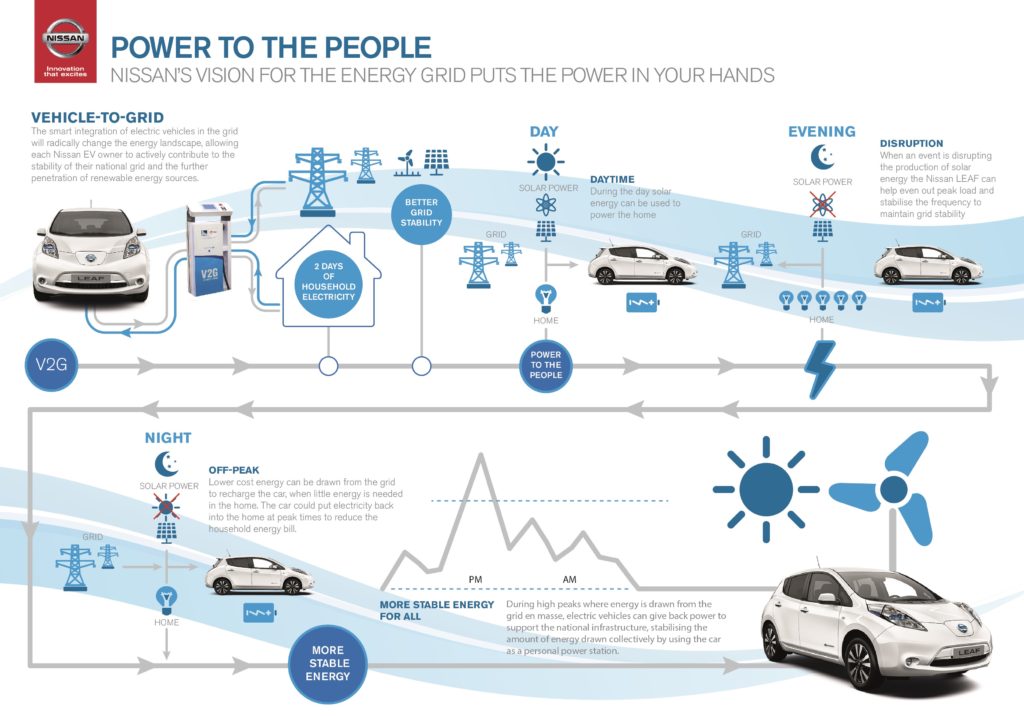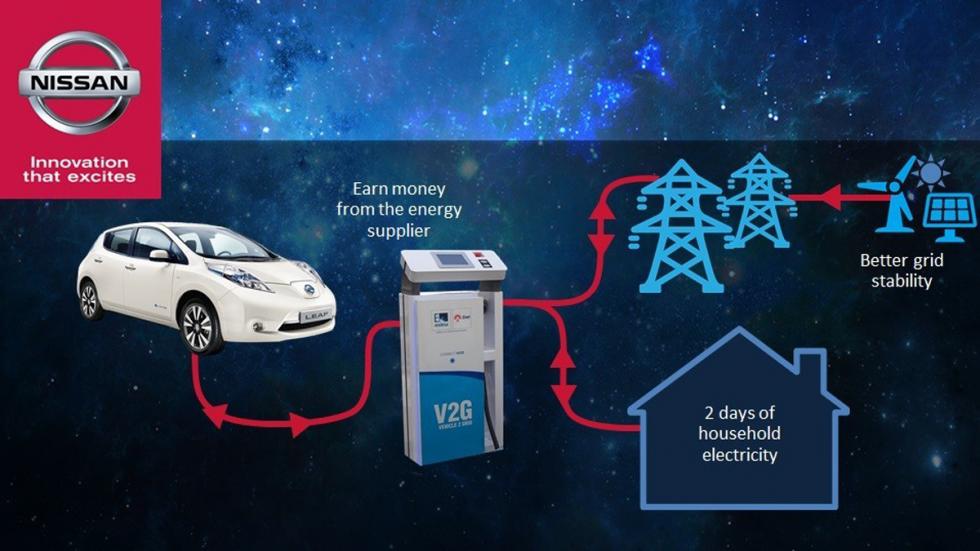Today automotive vehicles are an asset of negative value when not in motion transporting people and cargo. In the future, however, an electric vehicle (EV) connected to the power grid and used for energy storage could actually have greater economic value when it is actually at rest.
In part 1 (Electric Vehicles Need a Fundamental Breakthrough to Achieve 100% Adoption) of this 2-part series I suggest that for EVs to ultimately achieve 100% adoption by consumers they need a fundamental breakthrough that makes gas-powered cars undeniably inferior. One path to this future state is to use electric vehicles as mobile energy storage devices to solve the growing challenge of storing excess clean energy for use during periods of peak demand.
(Editor’s Note: For additional background on the challenge of an increasing amount of excess clean energy and EVs and vehicle to grid (V2G) programs, read this sidebar article: EVs as Demand Response Vehicles for the Power Grid and Excess Clean Energy.)
Electric Vehicles as Mobile Energy Storage Devices
As I outline in my recent article, 500 Miles of Range: One Key to Late Adopters Embracing EVs, large battery packs with around 500 miles of range open up increased flexibility and opportunities for consumers to use their EVs as energy storage devices to capture excess solar and wind power during peak production during the day and then sell that electricity back to a utility during peak use periods.
If on a typical day an EV owner only needs 50-100 miles of driving range, a long-range battery pack means they might only need 10%-20% of that range for transportation. This then means that, for example, a typical EV owner might easily have 50% to 75% of their EV’s battery capacity available to use for energy storage.
What gives EV battery storage increased value over a stationary storage battery is its mobility, its ability to tap into excess clean energy closer to the source (workplace, schools, malls, etc) where the infrastructure can be put in place to capture a huge supply of electricity and then transfer that excess power to a parking lot full of EVs. Those EVs can then individually transfer that stored power to other locations, primarily the owner’s home and distribute it back to the grid locally – when and where it is needed during peak demand.
Utilities benefit greatly from the use of V2G capabilities and EV battery storage as it reduces the need to build new peaker power plants, invest in massive battery storage systems and to have to pay other grid operators to take their excess clean energy.
How Vehicle to Grid (V2G) and Electricity Rate Arbitrage May Work in the Future
Say you drive to work from the suburbs to an office park 35 miles away from home. Your employer has installed solar canopies over its massive parking lot and also has rooftop solar on the office building.
When you arrive at work you plug into what is in essence a microgrid run by your employer, but that is also connected to the regional power grid. When you plug the two-way charger into your EV, which is known as Vehicle to Grid or V2G, an app on your smartphone provides a forecast of how much electricity the local utility would like to store on your EV that day and and at what rate they want to pay you. You accept (or deny) the request and then go about your day at work.
That evening after returning home, you plug your car back into your grid-connected home charging and energy management system. Your EV/energy management mobile app will then use a combination of machine learning, your preferences, demands from the grid and your utility to optimize whether your EV will be used to power your home, send electricity to the grid, charge your EV or a combination of all during the night.
During hot summer evenings when most utility customers have their air conditioners powered up, your utility might pay you an electricity storage and discharge rate that is higher than your effective cost to power your home. In essence using advanced software and your EV’s battery pack, you are able to turn your car into a source of income (or utility rate offset) using rate arbitrage. In its simplest form, utilities will probably use a method similar to solar net metering when you receive a credit if you deliver more electricity to the grid than you use.
My friend Bill Nussey, author of the upcoming book, Freeing Energy, also offers up an interesting idea that EV drivers in the future may choose where they stop to shop, dine and see movies based on whether or not they offer these V2G capabilities. He postulates that you might choose which nearby mall to shop and eat at based on whether they offer V2G capabilities and the rates they charge/pay.
Electric vehicles and their batteries (unless used in cars for ride sharing or autonomous robo-taxis) will sit unused typically 95% of the time. Using an EV as a mobile energy storage vehicle turns an underutilized asset (car + battery) into one that helps solve several growing challenges with the power grid and provides a potential economic engine for the owner.
Related Articles:
- EVs as Demand Response Vehicles for the Power Grid and Excess Clean Energy
- Electric Vehicles Need a Fundamental Breakthrough to Achieve 100% Adoption
- BMW and PG&E Prove Electric Vehicles Can Be a Valuable Grid Resource
- Electric vehicle batteries may get much more valuable soon
- 500 Miles of Range: One Key to Late Adopters Embracing EVs
- Nissan wants you to use its Leaf EV like a Tesla Powerwall
 Announcing the acquisition of EVAdoption by Paren →
Announcing the acquisition of EVAdoption by Paren →


4 Responses